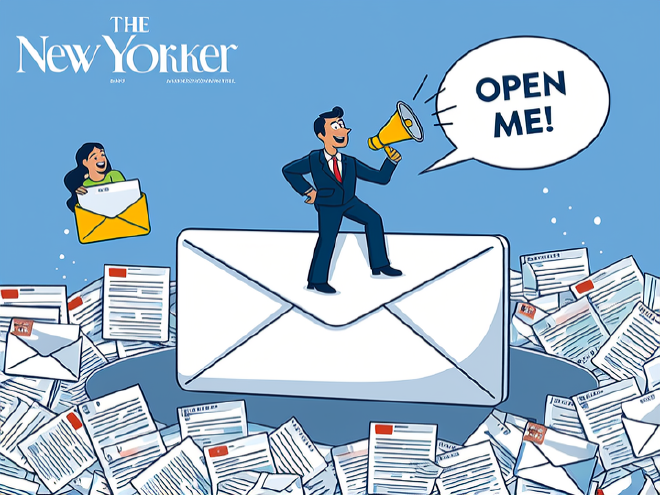- Change Log/
- Tips/
- Successful Practices and Techniques for Email Marketing in the Real Estate Industry/
Successful Practices and Techniques for Email Marketing in the Real Estate Industry
Table of Contents
Successful Practices and Techniques for Email Marketing in the Real Estate Industry #
In today’s digital marketing landscape, where digital marketing is becoming increasingly mainstream, email marketing remains an indispensable and highly effective tool for communication and conversion within the real estate industry. It is not only cost-effective and widely accessible but also capable of achieving precise targeting and personalized interaction, making it a powerful asset for promoting properties, following up with clients, and maintaining brand loyalty.
However, many real estate professionals still face challenges such as low open rates and unsatisfactory conversion rates when using email marketing. This article will delve into how the real estate industry can effectively utilize email marketing, from strategy formulation to execution details, helping you improve customer conversion efficiency and enhance brand influence.

I. Core Value of Email Marketing in Real Estate #
The application of email marketing in the real estate industry goes far beyond simply sending property information. It possesses several core values:
- Precise Targeting: Through customer profiles and behavioral data, personalized content can be sent directly to specific audiences.
- High Cost-Effectiveness: Compared to traditional advertising, email marketing offers an extremely high return on investment (ROI).
- Continuous Follow-Up: Enables long-term nurturing of potential customers, improving conversion rates.
- Brand Building: By maintaining a consistent email style and content output, it strengthens brand recognition and trust.
II. Three Major Application Scenarios for Real Estate Email Marketing #
1. Property Promotion: Creating Attractive Project Introduction Emails #
When launching new projects or offering phased promotions, using emails to deliver property information to target customer groups is an efficient approach.
Successful Practice Suggestions:
- Engaging Subject Lines: For example, “【Limited-Time Offer】XX Project Launches Today, Down Payment Starts at Only 300,000 Yuan!”
- Clear Content Structure: Include project highlights, floor plans, price ranges, contact information, etc.
- Rich Visual Elements: Embed high-definition property images, VR tour links, etc., to enhance the reading experience.
- Clear CTAs (Call-to-Actions): Such as “Book a Viewing Now” or “Click to Get the Electronic Brochure.”
2. Customer Follow-Up: Establishing Long-Term Relationships and Improving Conversion Rates #
The decision-making process for homebuyers is lengthy, and email marketing can serve as an important component of Customer Relationship Management (CRM).
Effective Strategies Include:
- Phased Follow-Up: Send different content based on the customer’s stage (initial interest, strong intent, hesitation).
- Personalized Content: Customize email content according to customer browsing history and past consultation records.
- Holiday Greetings and Care: Send congratulatory emails during festivals like Spring Festival and Mid-Autumn Festival to strengthen emotional connections.
- Case Sharing: Share success stories of customers who have already completed their purchases to build trust.
3. Brand Maintenance: Building a Professional and Trustworthy Brand Image #
Regularly sending industry news, market analysis, and home-buying guides helps enhance the professional image of your brand.
Types of Content You Can Send:
- Monthly Market Reports: Interpret local housing price trends and policy changes.
- Home-Buying Knowledge Columns: Such as “10 Essential Considerations for First-Time Homebuyers.”
- Customer Reviews and Case Studies: Showcase genuine customer reviews to increase credibility.
- Company Updates and Event Announcements: Such as open house events, lectures, group buying activities, etc.
III. Key Techniques to Improve the Effectiveness of Real Estate Email Marketing #
1. Building a High-Quality Email List #
Key Points:
- Collect customer email addresses through methods such as website registration, property viewing appointments, and event sign-ups.

- Implement a double opt-in mechanism to ensure subscribers genuinely intend to receive emails.
- Regularly clean up invalid or inactive users to maintain list activity.
2. Optimizing Email Subjects and Preview Text #
Excellent Subject Line Templates:
- “The Latest Special Offers for the XX Project You Followed Are Out!”
- “Only 3 Units Available This Week at Special Prices—Act Fast!”
- “The Floor Plan You Consulted Last Time Now Features a Realistic Model Room!”
Preview Text Suggestions:
- Complement the subject line, such as “Click to Learn More” or “Limited-Time Offer, Valid Only Today.”
3. Designing Responsive Email Templates #
Ensure that emails display well across multiple devices, including PCs, mobile phones, and tablets. Recommendations include:
- Use a simple and clear layout.
- Maintain a moderate ratio of images to text to avoid slow loading times.
- Ensure all buttons and links are clickable to enhance the mobile user experience.
4. Data-Driven Optimization: A/B Testing and Performance Tracking #
Key Metrics to Monitor:
- Open Rate
- Click-Through Rate
- Conversion Rate
Content Suggestions for A/B Testing:
- Email Subject Lines
- Sending Times
- CTA Button Colors and Positions
- Email Body Structures
5. Compliance and Trust Building #
- Adhere to anti-spam laws (such as China’s Cybersecurity Law and the EU’s GDPR).
- Provide an “unsubscribe” link at the bottom of emails to respect user choices.
- Use branded signatures and authentic contact information to enhance trust.
IV. Common Pitfalls and Countermeasures in Real Estate Email Marketing #
| Pitfall | Countermeasure |
|---|---|
| Overly Advertising-Oriented Content | Increase valuable content, such as home-buying guides and market analyses. |
| Excessive Email Sending Frequency | Adjust sending frequency based on user behavior. |
| Neglecting Mobile Experience | Adopt responsive design templates. |
| Lack of Personalization | Utilize CRM systems to customize content. |
| Insufficient Data Analysis | Regularly review key metrics such as email open rates and click-through rates. |
V. Conclusion: Making Email Marketing a Booster for Real Estate Growth #
In the real estate industry, email marketing is not a one-time action but a continuous value creation process. It not only helps you efficiently promote properties and follow up with customers precisely but also subtly enhances your brand image and customer loyalty over time.
Immediate Action Suggestions:
- Review your current email marketing strategies and identify areas for optimization.
- Introduce professional email marketing platforms (such as Mailchimp, HubSpot, or MaxinCRM).
- Establish a systematic customer segmentation and content planning mechanism.
Explore more practical real estate marketing techniques by subscribing to our professional newsletter, helping you stand out in a competitive market.